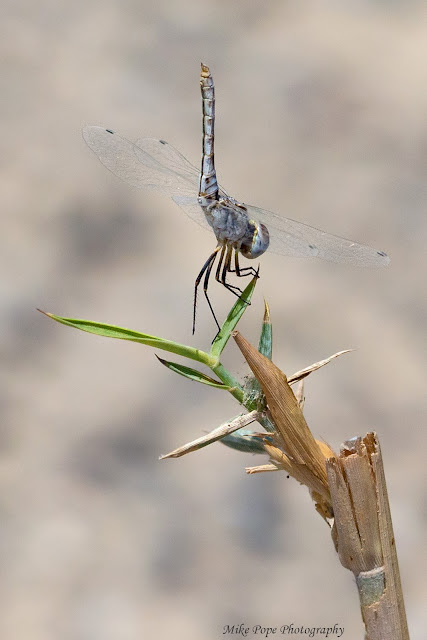Options for summer birding are quite restricted and since Jahra Pools is not yet open, the Pivots provide the best opportunity for diversity, even though it is not conducive for good photographs with heat haze and dust in the air. Consider today's effort record images..
We had quite strong winds for the past few days, so I was expecting this to have pushed a few early passerine migrants through Kuwait, but it was not to be!
I was just through the gates when I spotted the Black-winged Kite that has now been present for 3-weeks
 |
| Black-winged Kite (Elanus c. vociferus) |
I spent most of the time at the two shallow pans but birds kept their distance even while flying past, so that was a little frustrating. The two Pied Avocet's were also still around, but very skittish
 |
| Pied Avocet (Recurvirostra avosetta) |
The 7 Spur-winged Lapwing's seen a few weeks back made an appearance, but no photo opportunities were presented. The number of Green Sandpipers had increased substantially, this one in quite heavy moult.
 |
| Green Sandpiper (Tringa ochropus) |
There were numbers of Little Ringed Plover, this looks like a young bird that may have been raised at the Pivots
 |
| Little Ringed Plover (Charadrius dubius) |
As well as quite a few Collared Pratincole's
 |
| Collared Pratincole (Glareola pratincola) |
Two new birds hawking over the pools were a young Gull-billed Tern
 |
| Gull-billed Tern (Gelochelidon nilotica) |
and a Whiskered Tern
 |
| Whiskered Tern (Chlidonias hybrida) |
I had a short drive around the farm and re-located the flock of Black-crowned Sparrow-Lark
 |
| Black-crowned Sparrow-Lark (Eremopterix nigriceps) |
I flushed a Broad-billed Sandpiper, but no chance at all of a photograph
I then headed south to Khiran as I was on a quest to relocate the Damselfly I had found a few months ago with Paul Scott and try get better images - easier said than done. Although I did find a Greater Hoopoe Lark, the next series are all invertebrate images
By now it was really hot and the wind had picked up, not ideal for finding small and delicate Damselflies. Slender Skimmers were the most predominant Dragonfly in this habitat.
 |
| Slender Skimmer (Orthetrum sabina) |
I was quite thrilled to find quite a few small schools of the near endemic Arabian Killifish
 |
| Arabian Killifish (Aphanius dispar) |
There was one Darter species, this is female and male
 |
| Darter sp. female |
 |
| Darter sp. male |
and also a Black Percher (at least that's my take on the ID)
 |
| Black Percher tbc (Diplacodes lefebvrii) |
I found a Grasshopper in the reeds
 |
| Grasshopper sp. |
and this striking Wasp that I had not seen before. Thanks to Prof Razzaq Augul from Iraq National History Museum for nailing the ID for me - a female Prionyx niveatus
 |
| Female Prionyx niveatus |
Not sure on the ID of this wasp
 |
| Wasp sp. |
or this Bee type insect
 |
| Bee sp. |
After much searching I finally found a female Damselfly, but it was always below my feet and at the base of the reeds, so really difficult to get close to with a macro lens - this was the best I could do
 |
| Female Oasis Bluetail (Ischnura fouontaineae) |
With patience, I finally found a male, but it was deeper in the reeds and even more difficult to photograph. Will have to return again, perhaps earlier in the morning when they are more likely to be on the edge of the reed bed
 |
| Male Oasis Bluetail (Ischnura fouontaineae) |


This comment has been removed by a blog administrator.
ReplyDelete